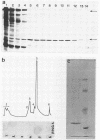Abstract
The psychrotrophic, dimorphic yeast Candida humicola, isolated from Antarctic soil, secretes an acidic protease into the medium. The secretion of this protease by C. humicola was found to be dependent on the composition of the medium. In YPD or yeast nitrogen base medium containing either amino acids or ammonium sulfate as the nitrogen source, the activity of the protease in the medium was low (basal level). However, when yeast nitrogen base medium was depleted of amino acids or ammonium sulfate and supplemented with proteins, the activity of the enzyme increased. The secretion of the enzyme was greater during exponential growth at low temperatures than during growth at higher temperatures. The purified protease had a molecular mass of 36,000 Da and was inhibited by pepstatin, iodoacetamide, and sodium dodecyl sulfate. Despite the prevalent cold temperatures in Antarctica, this extracellular protease of the psychrotrophic yeast C. humicola was active at temperatures ranging from 0 to 45 degrees C, with an optimum activity at 37 degrees C.
Full text
PDF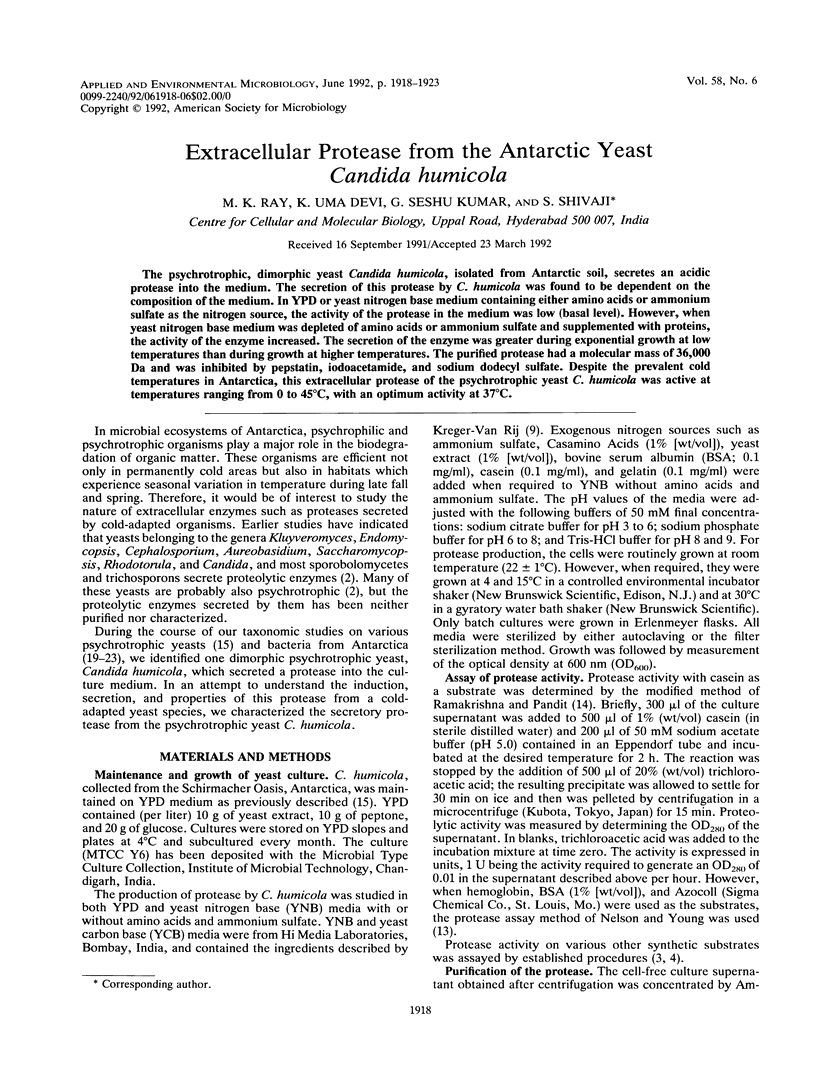
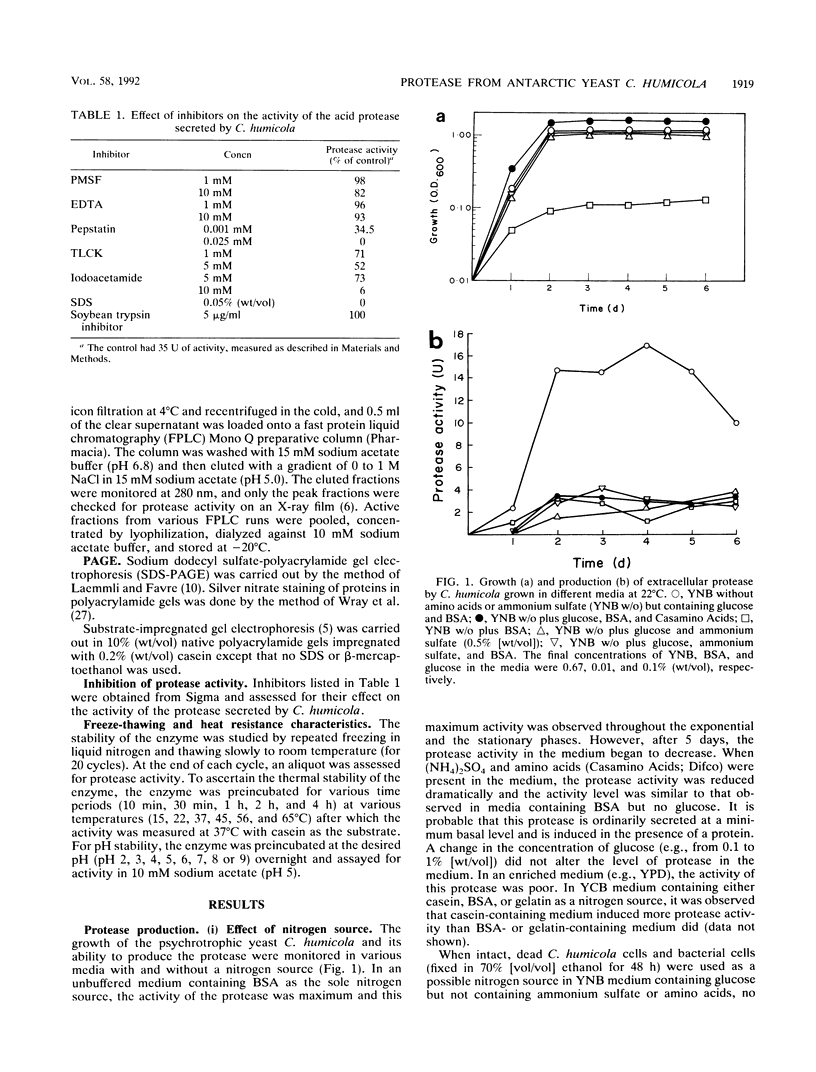
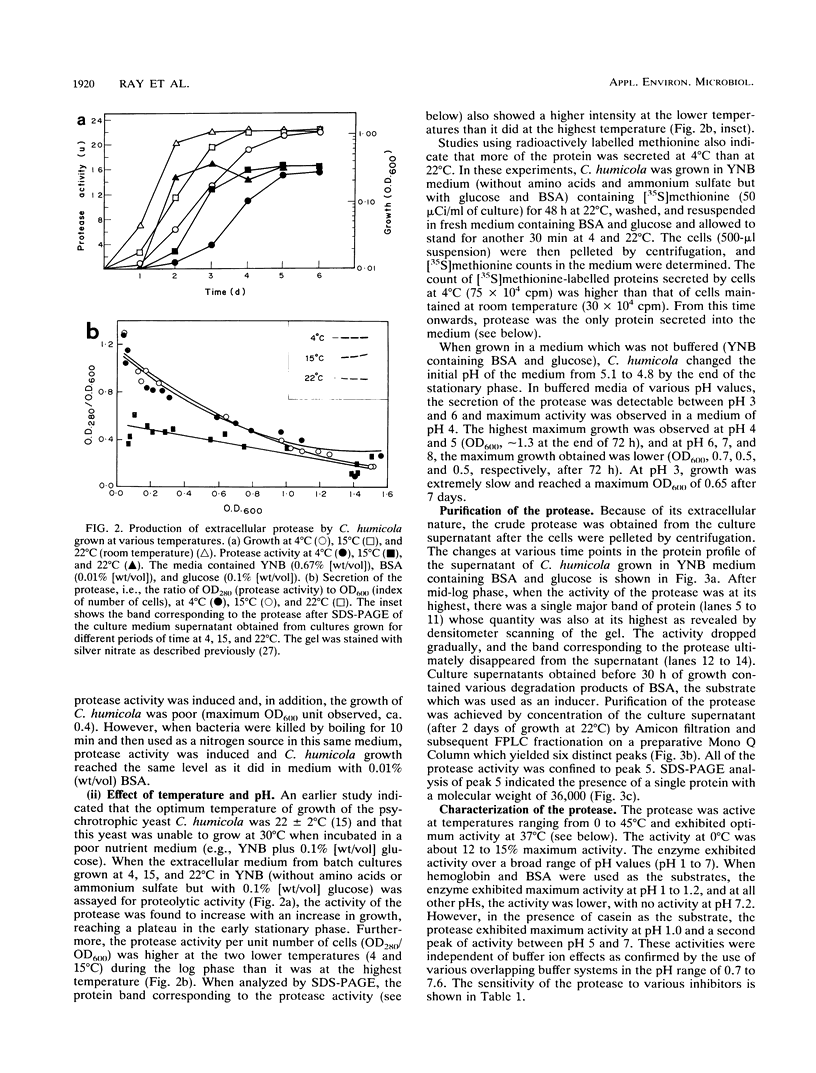
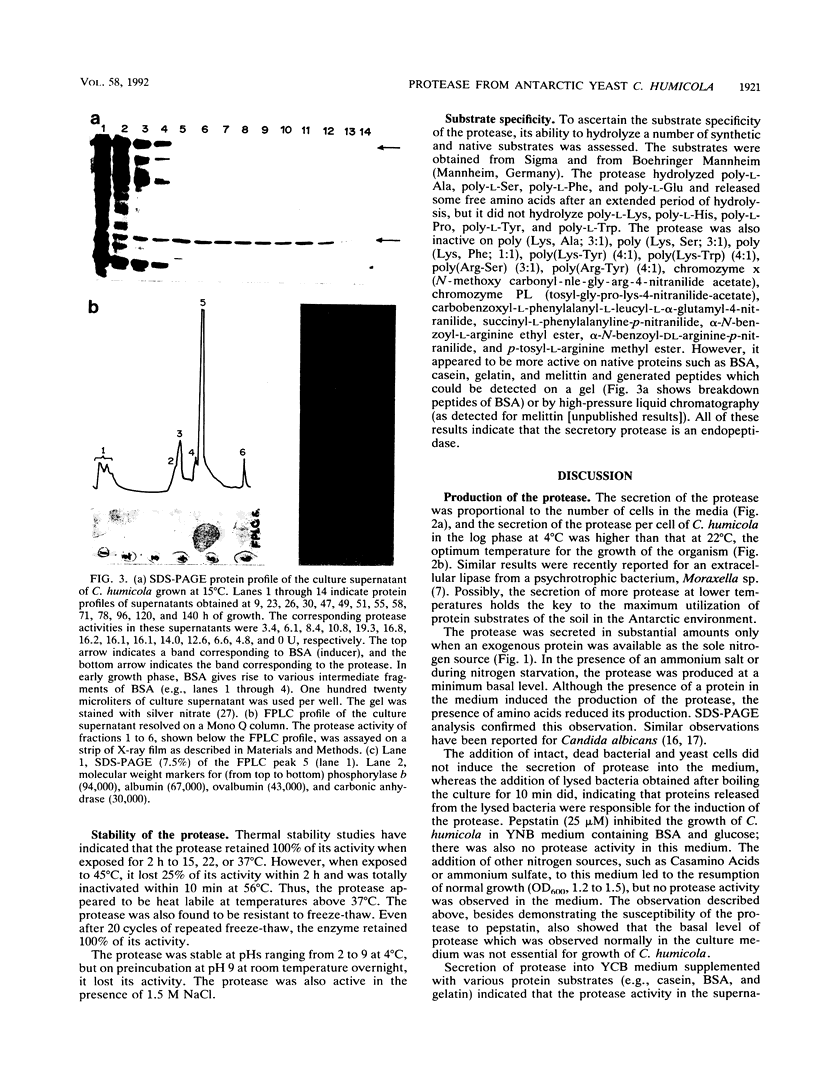
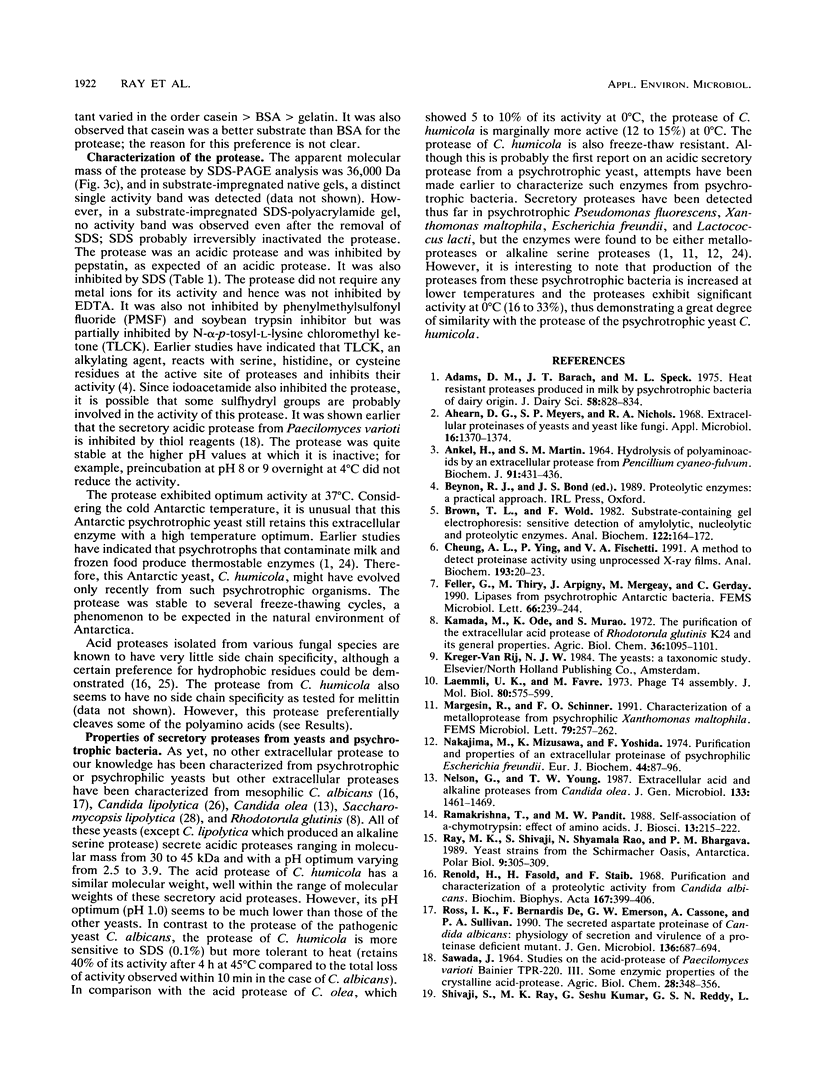

Images in this article
Selected References
These references are in PubMed. This may not be the complete list of references from this article.
- Adams D. M., Barach J. T., Speck M. L. Heat resistant proteases produced in milk by psychrotrophic bacteria of dairy origin. J Dairy Sci. 1975 Jun;58(6):828–834. doi: 10.3168/jds.s0022-0302(75)84645-5. [DOI] [PubMed] [Google Scholar]
- Ahearn D. G., Meyers S. P., Nichols R. A. Extracellular proteinases of yeasts and yeastlike fungi. Appl Microbiol. 1968 Sep;16(9):1370–1374. doi: 10.1128/am.16.9.1370-1374.1968. [DOI] [PMC free article] [PubMed] [Google Scholar]
- Ankel H., Martin S. M. Hydrolysis of polyamino acids by an extracellular protease from Penicillium cyaneo-fulvum. Biochem J. 1964 Jun;91(3):431–436. doi: 10.1042/bj0910431. [DOI] [PMC free article] [PubMed] [Google Scholar]
- Brown T. L., Yet M. G., Wold F. Substrate-containing gel electrophoresis: sensitive detection of amylolytic, nucleolytic, and proteolytic enzymes. Anal Biochem. 1982 May 1;122(1):164–172. doi: 10.1016/0003-2697(82)90266-4. [DOI] [PubMed] [Google Scholar]
- Cheung A. L., Ying P., Fischetti V. A. A method to detect proteinase activity using unprocessed X-ray films. Anal Biochem. 1991 Feb 15;193(1):20–23. doi: 10.1016/0003-2697(91)90037-t. [DOI] [PubMed] [Google Scholar]
- Laemmli U. K., Favre M. Maturation of the head of bacteriophage T4. I. DNA packaging events. J Mol Biol. 1973 Nov 15;80(4):575–599. doi: 10.1016/0022-2836(73)90198-8. [DOI] [PubMed] [Google Scholar]
- Nakajima M., Mizusawa K., Yoshida F. Purification and properties of an extracellular proteinase of psychrophilic Escherichia freundii. Eur J Biochem. 1974 May 2;44(1):87–96. doi: 10.1111/j.1432-1033.1974.tb03460.x. [DOI] [PubMed] [Google Scholar]
- Nelson G., Young T. W. Extracellular acid and alkaline proteases from Candida olea. J Gen Microbiol. 1987 Jun;133(6):1461–1469. doi: 10.1099/00221287-133-6-1461. [DOI] [PubMed] [Google Scholar]
- Remold H., Fasold H., Staib F. Purification and characterization of a proteolytic enzyme from Candida albicans. Biochim Biophys Acta. 1968 Oct 8;167(2):399–406. doi: 10.1016/0005-2744(68)90219-2. [DOI] [PubMed] [Google Scholar]
- Ross I. K., De Bernardis F., Emerson G. W., Cassone A., Sullivan P. A. The secreted aspartate proteinase of Candida albicans: physiology of secretion and virulence of a proteinase-deficient mutant. J Gen Microbiol. 1990 Apr;136(4):687–694. doi: 10.1099/00221287-136-4-687. [DOI] [PubMed] [Google Scholar]
- Shivaji S., Rao N. S., Saisree L., Sheth V., Reddy G. S., Bhargava P. M. Isolation and identification of Pseudomonas spp. from Schirmacher Oasis, Antarctica. Appl Environ Microbiol. 1989 Mar;55(3):767–770. doi: 10.1128/aem.55.3.767-770.1989. [DOI] [PMC free article] [PubMed] [Google Scholar]
- Stepaniak L., Fox P. F., Daly C. Isolation and general characterization of a heat-stable proteinase from Pseudomonas fluorescens aft 36. Biochim Biophys Acta. 1982 Aug 6;717(2):376–383. doi: 10.1016/0304-4165(82)90192-1. [DOI] [PubMed] [Google Scholar]
- Tanaka N., Takeuchi M., Ichishima E. Purification of an acid proteinase from Aspergillus saitoi and determination of peptide bond specificity. Biochim Biophys Acta. 1977 Dec 8;485(2):406–416. doi: 10.1016/0005-2744(77)90176-0. [DOI] [PubMed] [Google Scholar]
- Wray W., Boulikas T., Wray V. P., Hancock R. Silver staining of proteins in polyacrylamide gels. Anal Biochem. 1981 Nov 15;118(1):197–203. doi: 10.1016/0003-2697(81)90179-2. [DOI] [PubMed] [Google Scholar]
- Yamada T., Ogrydziak D. M. Extracellular acid proteases produced by Saccharomycopsis lipolytica. J Bacteriol. 1983 Apr;154(1):23–31. doi: 10.1128/jb.154.1.23-31.1983. [DOI] [PMC free article] [PubMed] [Google Scholar]



